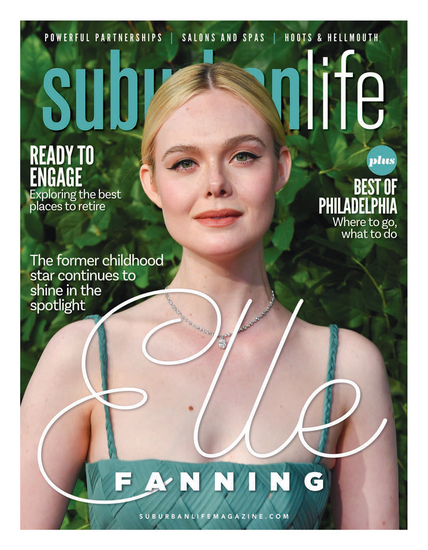
United Front
Local high schools realize the lasting positive effects of programs to promote autism awareness and inclusion.
The value of acceptance and inclusion for high school students with autism and other special needs cannot be underestimated. Rather than sequester students with unique needs to life skills or autistic support classes, the continuing trend has been one of togetherness.
Since the early 1970s, students with special needs have been included in general education classes and a variety of classes, clubs, community outings, and sports activities. By actively involving the entire high school population, the prevailing wisdom is that all students benefit.
Fifty or more years ago, U.S. schools educated only one in five students with disabilities, and many states had laws excluding certain students, including those who were deaf, blind, emotionally disturbed, or had an intellectual disability. Significant changes stemmed from the Education for All Handicapped Children Act of 1975, a landmark federal law that aimed at meeting the individual needs of children with disabilities and their families. The 1990 reauthorization, in which the law was renamed the Individuals With Disabilities Education Act, added traumatic brain injury and autism as new disability categories. Additionally, Congress mandated that as a part of a student’s individualized education program (IEP), an individual transition plan must be developed to help the student transition to postsecondary life.
The trend now leans toward mainstreaming and inclusion so students on all education levels can socialize and learn from one another. Lauren McCaffrey, the life skills/autistic support teacher at Lower Moreland High School, has been a special education teacher for 24 years, including 12 at Lower Moreland. She champions many combined high school programs, including Buddy Club, the Coco Loco school store, and community-based instruction (CBI) trips. The students also participate in Unified Track and Special Olympics.
CBI trips, which are part of a student’s IEP, involve outings to various destinations to allow students to develop social skills. By doing so, participants can have the experience of, say, going to a diner, ordering and paying for their food, and learning appropriate behavior for that specific setting.
Open to both special education and neurotypical education students, Unified Track raises money to spread the word about inclusion and also fosters engagement from the entire school. Unified Track also encourages students to make friends and develop a lifelong interest in fitness.
“All of these programs give our special education kids a greater feeling of acceptance from other students in our school,” McCaffrey explains. “We are not just in our classroom; we are on the track, at school-wide events, and we are being celebrated, like showing off their Special Olympics ribbons when they return from the events. This is a true picture of what our students can do.”
Another successful program that involves inclusion is Coco Loco, in which students set up shop in the cafeteria during lunch on Fridays. Items from the Coco Loco shop—hot chocolate, tea, coffee, brownies, and specialty items—are available for purchase by all high school students; the goal is for those in charge to handle everything as independently as possible, from food prep to cleanup to processing payments through an iPad. In the process, students learn life skills such as shopping, inventory, baking, handling money, and advertising.
“This gives the neurotypical students a more realistic opinion of what goes on in a life skills classroom,” McCaffrey says. “It also fosters a feeling of empowerment because our students are running this business.”
Another example of high school inclusion is Buddy Club, which pairs life skills/autistic support students with students from the National Honor Society.
When educator Janice Jedlinski attended high school, interaction and collaboration among neurotypical students and special education students was usually discouraged. She’s happy to say it’s much different now. She characterizes Abington Senior High School’s Buddy Club as “one happy group.” Furthermore, she believes the club helps students see that “we are more alike than we think.”
“Today’s students have had these same friends since elementary school,” says Jedlinski, who has been a special education teacher for 20 years, 16 of them at Abington Senior High School. “While the gap grows, as they get older and the friendships change, our special ed students already have their school family.”
Of course, high schools still have their cliques as they always have, so not everyone sees eye to eye with all of their peers. Jedlinski has been heartened to see that “the population that supports us does so wholeheartedly. When the neurotypical students visit, I have to encourage them to go back to their classes because they don’t want to leave.”
At her school, there are many awareness/inclusion programs, including a Unified Cooking Class and a Unified Gym Class, in addition to CBI trips.
So, what advice does she have for parents of both groups on how to foster inclusion?
“Assume competency,” she says, “and teach those appropriate social skills, like knowing when it is appropriate to hug a classmate and understanding personal space.”
Frank Giordano, director of special education and student services for Lower Moreland Township School District, is a strong advocate for organic positive change that results in acceptance and inclusion. The district has offered life skills and autism support for at least 15 years; he has been with the district for 13 of those years. Experience has taught him that the best way to remove barriers to inclusion is to eliminate the fear of what students do not fully understand.
“Inclusion is important for both groups,” he explains. “It's important for our kids who are in the life skills class to learn how to communicate with and socialize with students who are neurotypical, and our neurotypical students need to work with students with special needs and promote our inclusive environment.”
He encourages parents of students with special needs to help their teens step into unfamiliar territory.
“Be willing to let your child take the chance and do something that you may not feel they are ready for, and that may seem a little risky,” he adds. “Keep in mind that they are not going to learn anything in a vacuum. The intention of all of this is to break down the barriers and bring more kids into our inclusive environment.”
Published (and copyrighted) in Suburban Life magazine, March 2025.


